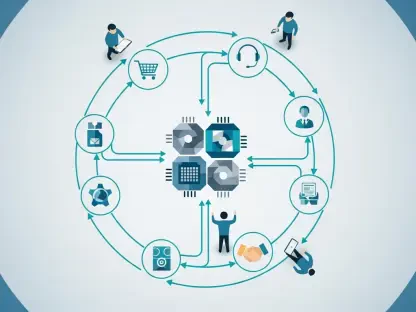As the final months of the year unfold, taxpayers still have a valuable window to reduce their current tax burden and set a strong foundation for the future, especially with new provisions introduced by recent legislation like the One Big Beautiful Bill Act (OBBA). These enhanced opportunities allow individuals to optimize financial strategies before the calendar turns, making this period critical for evaluating income, deductions, and contributions to ensure maximum savings. Whether it’s leveraging retirement accounts, exploring charitable giving options, or adjusting estate plans, taking action now can yield significant benefits not just for this year, but for many to come. The following eight actionable tips provide a roadmap for navigating the complexities of tax planning, ensuring that every dollar is positioned for efficiency. By implementing these strategies, individuals and families can close out the year with confidence, knowing they’ve made informed decisions to minimize liabilities and build long-term financial security.
1. Maximize Contributions to Tax-Advantaged Accounts
Making the most of tax-advantaged accounts before the year-end deadline is a powerful way to lower taxable income. Employer-sponsored retirement plans such as 401(k) or 403(b) accounts allow contributions up to $23,500 by December 31, with an additional $7,500 for those aged 50 and over. For individuals between 60 and 63, the new ‘super catch-up’ provision offers an extra $11,250, providing a substantial boost to tax-deferred savings just before retirement. Similarly, Health Savings Accounts (HSAs) for those with high-deductible health plans permit contributions of up to $4,300 for individuals or $8,550 for families by the April 2026 filing deadline. These accounts offer a triple tax benefit: contributions reduce taxable income, earnings grow tax-deferred, and withdrawals for qualified medical expenses remain tax-free. Starting January 1, 2026, OBBA allows tax-free withdrawals of up to $150 monthly ($300 for couples) for direct primary care fees, adding further value to HSAs.
Beyond employer plans and HSAs, Individual Retirement Accounts (IRAs) present another opportunity to save on taxes. Contributions of up to $7,000, plus a $1,000 catch-up for those 50 and older, can be made by the April 2026 deadline. However, income thresholds must be considered, especially for those also contributing to workplace plans, as they may affect deductibility. Deciding between a traditional or Roth IRA depends on current tax brackets and future expectations, and online resources can assist in making an informed choice. Maximizing these contributions not only cuts taxable income for the current year but also builds a nest egg that benefits from tax advantages over time. Acting promptly ensures that funds are allocated before deadlines pass, securing immediate tax relief and positioning accounts for growth in the coming years. This multi-faceted approach to contributions across various accounts can significantly enhance financial planning outcomes.
2. Apply Tax-Loss Harvesting Techniques
Tax-loss harvesting offers a strategic method to offset investment gains and reduce overall tax liability. By selling underperforming assets, investors can use the resulting losses to counterbalance capital gains realized during the year. Additionally, up to $3,000 of ordinary income can be offset annually with these losses, and any unused portion can be carried forward indefinitely to future years. This technique is particularly useful for those looking to diversify out of heavily concentrated positions or for individuals with vested equity compensation that might push them into a higher tax bracket. However, caution is advised regarding wash sale rules, which prohibit repurchasing the same or substantially identical securities within 30 days of the sale, as violating this can disallow the loss for tax purposes.
Implementing tax-loss harvesting requires a careful review of investment portfolios to identify assets that have declined in value. This process not only helps in managing tax obligations but also allows for portfolio rebalancing to align with long-term financial goals. Timing is crucial, as transactions must be completed by the end of the year to impact the current tax filing. Consulting with a financial advisor can provide clarity on which holdings to sell and how to reinvest proceeds effectively. This strategy, when executed thoughtfully, can turn market downturns into tax advantages, providing relief in the short term while maintaining focus on broader investment objectives. It’s a practical step that complements other year-end planning efforts.
3. Evaluate Itemizing vs. Standard Deduction Benefits
Deciding between itemizing deductions and taking the standard deduction is a pivotal choice for many taxpayers. The standard deduction currently stands at $15,000 for single filers and $30,000 for married couples filing jointly, often making it the simpler option for numerous households. However, itemizing can yield greater savings for those with significant deductible expenses. A strategic approach for charitably inclined individuals involves “bunching” donations—combining multiple years’ worth of contributions into a single year to surpass the standard deduction threshold. Utilizing donor-advised funds can add flexibility to this method, allowing gifts to be planned over time while claiming the deduction immediately. This tactic enables alternating between itemizing and the standard deduction in different years for optimal tax benefits.
Under new provisions set to take effect in 2026 through OBBA, charitable deductions will be limited to gifts exceeding 0.5% of Adjusted Gross Income, with an itemized deduction cap at a 35% rate for high earners. This change underscores the importance of maximizing charitable contributions in the current year before stricter rules apply. Taxpayers should tally potential itemized deductions, including mortgage interest, state taxes, and medical expenses, to determine if they exceed the standard deduction. Careful record-keeping and consultation with a tax professional can clarify which path offers the most advantage. Making an informed decision now can significantly impact the tax bill and influence planning for future years, especially with evolving regulations on the horizon.
4. Postpone Income to Lower Taxable Amount
Deferring income to the following year can be an effective way to manage taxable income for the current period. Freelancers and gig workers have the flexibility to delay invoicing clients until 2026, thereby reducing their reported earnings for 2025. For W-2 employees, discussing options with human resources or management to postpone bonuses or other forms of compensation until after the new year might be feasible. This approach requires foresight about future tax brackets and overall financial goals to ensure that deferring income doesn’t inadvertently increase liability in subsequent years. Engaging a tax advisor can provide tailored guidance on whether this strategy aligns with individual circumstances and long-term plans.
Timing plays a critical role in income deferral, and missing the opportunity for the current year doesn’t preclude planning for the next. Documenting expected income streams and mapping out cash flow needs can help determine the feasibility of pushing earnings forward. This method is particularly beneficial for those anticipating a drop in tax rates or income levels in the coming year, as it could result in lower overall taxation. Coordinating with employers or clients well in advance ensures smooth implementation of deferral agreements. By strategically managing when income is recognized, taxpayers can exert greater control over their tax obligations, smoothing out financial burdens across multiple years.
5. Explore Roth Conversion Opportunities
Roth conversions present a compelling option for long-term tax savings, especially with recent legislative changes. Under OBBA, lower marginal tax brackets have been made permanent, rendering conversions more cost-effective. While taxes are due upon converting funds from a traditional IRA to a Roth IRA, the converted amount and future growth become tax-free after five years and upon reaching age 59½. Online calculators can assist in evaluating the potential benefits by factoring in current tax rates, expected future brackets, and investment horizons. This strategy suits those who anticipate higher tax rates later or wish to secure tax-free income in retirement.
Executing a Roth conversion demands a thorough analysis of current financial standing and future expectations. The upfront tax cost must be weighed against the advantage of tax-free withdrawals during retirement, particularly for younger individuals with decades of potential growth ahead. Timing the conversion before year-end can maximize benefits under existing tax rules, especially if income is expected to rise. Collaboration with a financial planner can help determine the optimal amount to convert without pushing into a higher bracket. This forward-thinking approach not only reduces future tax burdens but also enhances retirement planning flexibility, aligning with broader financial objectives.
6. Fulfill Required Minimum Distributions (RMDs)
For individuals aged 73 or older, taking Required Minimum Distributions (RMDs) by December 31 is essential to avoid steep penalties. RMDs represent mandatory withdrawals from retirement accounts like traditional IRAs or 401(k)s, calculated based on account balance and life expectancy. Failing to withdraw the required amount can result in a penalty of up to 25% of the undistributed sum, making timely action critical. Special attention is needed for those taking their first RMD, as deferring to April 1 of the following year could lead to two distributions in one year, potentially increasing taxable income significantly for that period.
Planning for RMDs involves reviewing account balances and ensuring withdrawals are scheduled before the deadline. Taxpayers should assess how these distributions impact overall income and tax brackets, as they can affect eligibility for certain deductions or trigger higher Medicare premiums. Coordinating with a financial advisor can help in determining the most tax-efficient withdrawal strategy, possibly spreading distributions across multiple accounts if applicable. Addressing RMDs promptly not only prevents penalties but also integrates into broader income planning, ensuring that unexpected tax hikes are avoided while maintaining compliance with regulations.
7. Minimize RMD Tax Impact
Reducing the tax burden associated with Required Minimum Distributions (RMDs) can be achieved through strategic charitable giving. Individuals over age 70½ can donate up to $108,000 directly from an IRA to a qualified charity via a Qualified Charitable Distribution (QCD). For married couples filing jointly, this limit doubles to $216,000. The donated amount satisfies RMD requirements without being counted as taxable income, thereby avoiding associated income taxes and potential Medicare surtaxes. This approach is particularly beneficial for those who wish to support charitable causes while managing their tax liability effectively.
Beyond QCDs, additional planning can further mitigate RMD-related taxes. Reviewing withdrawal schedules and exploring options like timing distributions to lower-income years can help manage tax brackets. Taxpayers might also consider reinvesting RMD funds into non-retirement accounts to maintain growth potential while addressing immediate tax concerns. Consulting with a tax professional ensures that all available strategies are considered, tailoring solutions to specific financial situations. By proactively addressing RMD taxes, individuals can preserve more of their retirement savings, balancing philanthropy with fiscal responsibility in a way that aligns with personal values.
8. Make Gifts and Revise Estate Planning
Gifting assets to loved ones offers a way to reduce the taxable value of an estate while benefiting recipients immediately. The current annual gift exclusion allows up to $19,000 per recipient, with married couples able to gift up to $38,000 per person. Although no income tax deduction applies, the recipient incurs no tax liability, and the gift lowers the estate’s value without tapping into the lifetime gift and estate tax exemption. Starting in 2026, OBBA raises this exemption to a permanent $15 million per individual ($30 million per couple), adjusted for inflation. This significant increase presents an opportunity to revisit and update estate planning strategies to reflect the expanded limits.
Updating legal documents and estate plans in light of these changes ensures that assets are distributed according to current wishes and tax advantages are maximized. Annual gifting can be paired with trusts or other mechanisms to further protect wealth across generations. Engaging an estate planning attorney can provide clarity on leveraging the new exemptions while addressing state-specific regulations. Reviewing beneficiary designations and titling of assets is equally important to avoid unintended tax consequences. Taking these steps now positions estates for efficient transfer, minimizing tax burdens and securing legacies for the future.
Preparing for Future Tax Success
Looking back, the end of the year proved to be a pivotal moment for implementing strategies that trimmed tax liabilities and fortified plans for the years ahead. Projections of taxable income for both the current and next year helped in timing income, expenses, and deductions effectively, often revealing room for Roth conversions. Portfolios were reviewed, with tax-loss harvesting applied to offset gains where feasible. Charitable contributions were bundled to maximize deductions before new limits took effect, and income deferral smoothed out tax burdens for many.
Moving forward, continued collaboration with tax professionals ensured that every opportunity was captured amidst a shifting legislative landscape. Estate plans were updated to reflect expanded exemptions, securing wealth for future generations. These actions, taken with diligence, laid a robust groundwork for financial stability, demonstrating that year-end planning was not merely a deadline but a launchpad for sustained fiscal health.









